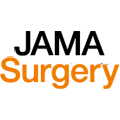Study: Surgical patients face higher odds of food insecurity
Editor's Note
New research shows surgical patients in the US face a significantly greater risk of food insecurity than nonsurgical patients, even after adjusting for demographic and socioeconomic differences. Findings also point to potential underutilization of the Supplemental Nutritional Assistance Program (SNAP) benefits among surgical patients, study authors write.
Published June 18 in JAMA Surgery, the cross-sectional study analyzed National Health Interview Survey data from 2011–2018, representing more than 104 million adults. It found that 11.6% of surgical patients reported food insecurity in the past 30 days compared with 10.5% of nonsurgical patients. The odds of food insecurity were 12% higher for those who had surgery, even after adjusting for factors such as age, sex, race, household income, insurance status, employment, family size, and education.
The association was strongest among surgical patients with poor self-reported health and low income. Within this group, lower family income was significantly associated with higher odds of food insecurity (OR 0.59; 95% CI, 0.57-0.62), and those in poor health had more than 14 times the odds of food insecurity compared with those in excellent health (OR 14.54; 95% CI, 11.99-17.64). Among surgical patients earning less than 200% of the federal poverty level, 40% reported receiving SNAP benefits, compared with 34% in the similarly low-income nonsurgical cohort.
Surgical patients were more likely to be enrolled in SNAP if they were younger, unemployed, less educated, female, uninsured or publicly insured, or had worse self-rated health. Yet, the authors note that many eligible patients remain unenrolled in SNAP due to administrative barriers or lack of awareness. The study proposes hospital-based interventions (such as food insecurity screening using validated tools and SNAP enrollment support at preoperative or postoperative visits) as potential strategies to improve food access.
Researchers emphasized that while the study identifies a clear association between surgical status and food insecurity, its cross-sectional design limits causal conclusions. Future studies should explore whether improving food access through screening and intervention can affect clinical outcomes and recovery trajectories.
Read More >>

 Free Daily News
Free Daily News